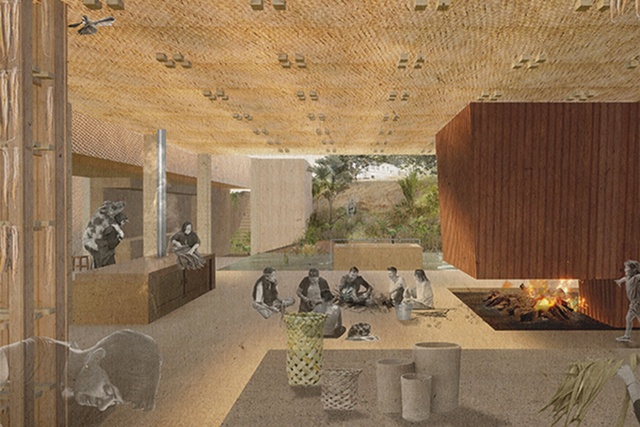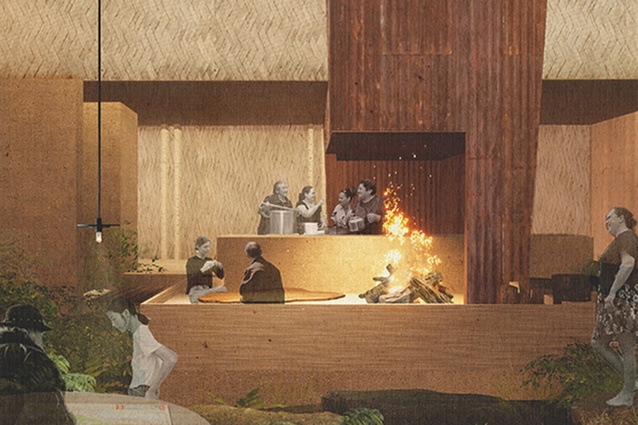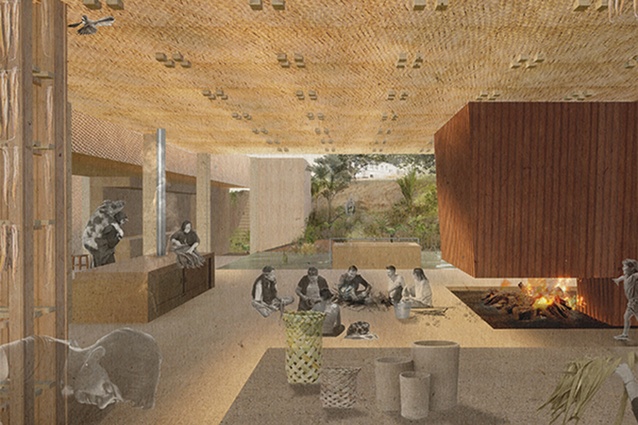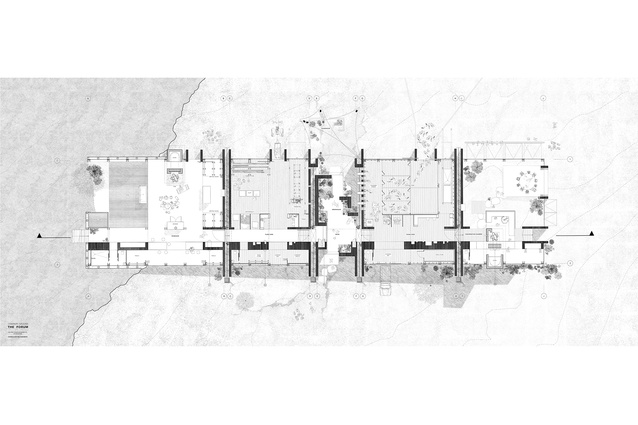Weaving a conduit for environmental knowledge
Common Ground emerged as a response to a visceral feeling of concern for our world, advocating for heightened care towards the land, its people and the future. Rooted in circumstances devoid of due care — land management in Tairāwhiti — the research underpinning Common Ground suggests that, when environmental knowledge is depleted, unsustainable practice ensues.
The scheme aims to reverse this trend by reinvigorating vernacular knowledge in a tacit, hands-on manner, where spending time on the land is imperative.
Situated at Hiwiroa Station, a relative’s farm north of Tūranganui-a-kiwa Gisborne, Common Ground speculates on a future ‘knowledge architecture’ for a world grappling with environmental disaster. The outcome is a ‘forum for vernacular environmental knowledge’: a regional touchpoint fostering the generation and proliferation of ideas. It aims to weave diverse knowledge strands together in a simplified, immersive space, seeking to strengthen the bond between people and land.

Surviving challenges like Cyclone Gabrielle, which left the farm inaccessible for weeks, Hiwiroa provides an ideal canvas for testing architecture’s capacity to engage in this complex discussion. Its landscape is indicative of nationwide cultural and environmental fractures: the river health is horrendous, forestry slash is pervasive, low market prices make a good income hard to achieve and cultural tensions are high. Yet, with a 70-year history of bush regeneration, it is also a landscape of healing; Hiwiroa is home to the largest block of native ecology between Gisborne and Tolaga Bay. A comprehensive master plan underpins the design proposal. It envisions large-scale forest regeneration to supplement the existing bush, the restoration of traditional mahinga kai, and strategically positioned farming corridors for a downsized sheep and beef operation. Land-use decisions prioritise the terrain’s suitability over sheer productivity, fostering a balance between ecological preservation and responsible agricultural practices.

Responding to the unique context of Aotearoa, particularly the coexistence of multiple unique strands of knowledge within a colonised territory, the architecture intentionally avoids programmatic specificity and formal historical reference. The spatial organisation aligns with the steps of knowledge creation, utilising the plan as a diagram where knowledge intersects with nature and people. The integration of an existing farm woolshed into the fabric of the building, along with the creation of a corresponding ‘plant shed’, embodies the holistic approach. A workshop and conversation chamber offer spaces for learning through making and talking, with each fuelling the other, creating a self-perpetuating knowledge ecosystem. The building itself, clad in woven flax panels, becomes a perpetual project — a teaching tool for craft. A curated approach to materiality ensures that the entire structure is fabricated from onsite resources, including earth, flax, recycled timber and recycled corrugated iron.
The project elevates marginalised knowledge, notably that of Aotearoa’s indigenous forest ecology, as a pivotal force in averting future environmental damage. This core value is present not only in the architecture but in the site strategy and proposed activities. By re-imagining the conventional dichotomy between farming and reforestation, the scheme navigates the complexity of land management head-on, positioning architecture not as a panacea but as a conduit for discussion within the battleground of the land.

Beyond the physical space, Common Ground aims to foster inclusive dialogue, extending beyond key community figures to encompass wider circles and the general public. While the architectural intervention may appear extensive for the chronically undervalued East Coast region, its primary aim is to push boundaries and nurture aspirations — locally and beyond — creating a lasting positive impact on the relationship between people, knowledge and the environment.














